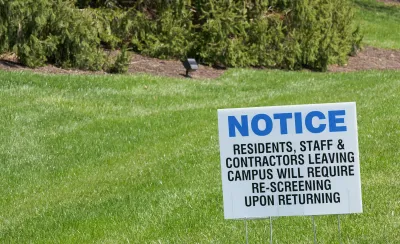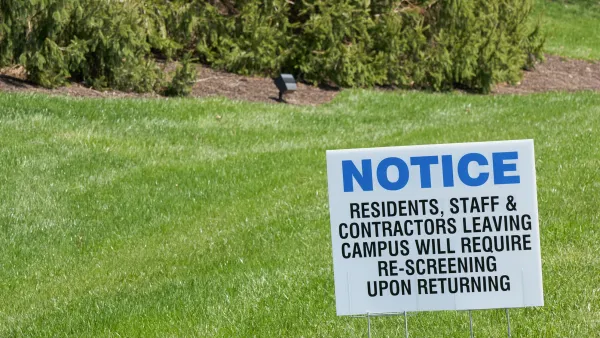Older generations have increasingly segregated over the past century-plus of U.S. history, and the pandemic is only one more example of why that's a problem for young and old.

For all the discussion about aging in place in recent years, the history of the United States during the industrial era and into current days is one of increasing age segregation, according to an article by Stephen Mihm.
"In 1850, nearly 70% of individuals age 65 or older lived with their adult children," according to Mihm. "By the 1930s, the percentage of elderly whites living with their children declined to just under 40 percent; by century’s end, it had fallen all the way to 13 percent."
After explaining why this massive demographic shift occurred during the 20th century, Mihm concludes by listing a few reasons why the trend is problematic.
A growing body of research suggests segregating people by age isn’t healthy for anyone, young or old, and that it has helped fuel divisions in the nation’s politics: When generations live apart, political polarization follows — the 2016 election comes to mind. But these concerns, rarely articulated, haven’t come close to raising societal alarms.
The pandemic might be the occasion that raises more of those societal alarms, according to Mihm.
FULL STORY: Coronavirus Exposes the Dangers of Age Segregation

Analysis: Cybertruck Fatality Rate Far Exceeds That of Ford Pinto
The Tesla Cybertruck was recalled seven times last year.

National Parks Layoffs Will Cause Communities to Lose Billions
Thousands of essential park workers were laid off this week, just before the busy spring break season.

Retro-silient?: America’s First “Eco-burb,” The Woodlands Turns 50
A master-planned community north of Houston offers lessons on green infrastructure and resilient design, but falls short of its founder’s lofty affordability and walkability goals.

Test News Post 1
This is a summary

Analysis: Cybertruck Fatality Rate Far Exceeds That of Ford Pinto
The Tesla Cybertruck was recalled seven times last year.

Test News Headline 46
Test for the image on the front page.
Urban Design for Planners 1: Software Tools
This six-course series explores essential urban design concepts using open source software and equips planners with the tools they need to participate fully in the urban design process.
Planning for Universal Design
Learn the tools for implementing Universal Design in planning regulations.
EMC Planning Group, Inc.
Planetizen
Planetizen
Mpact (formerly Rail~Volution)
Great Falls Development Authority, Inc.
HUDs Office of Policy Development and Research
NYU Wagner Graduate School of Public Service




























